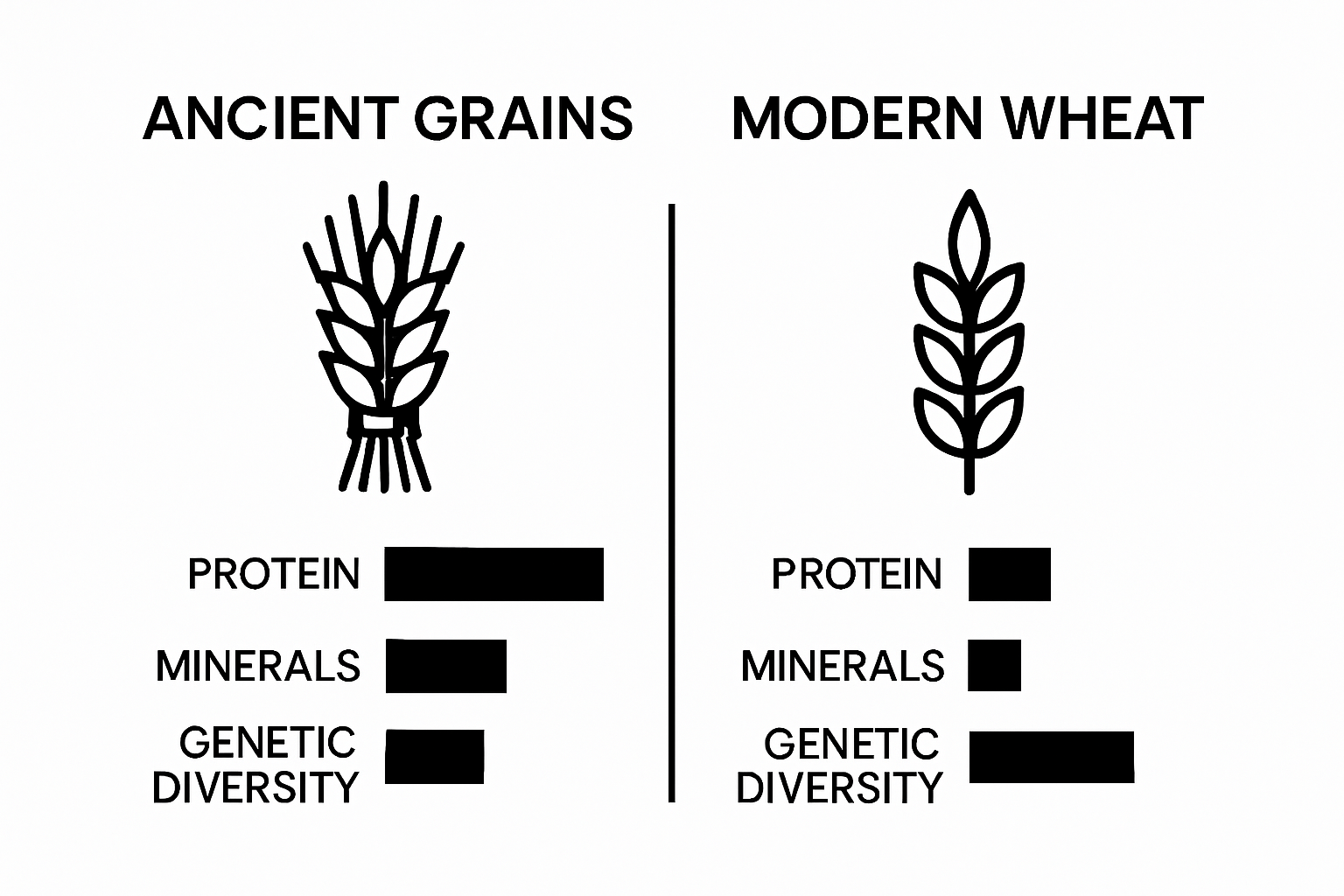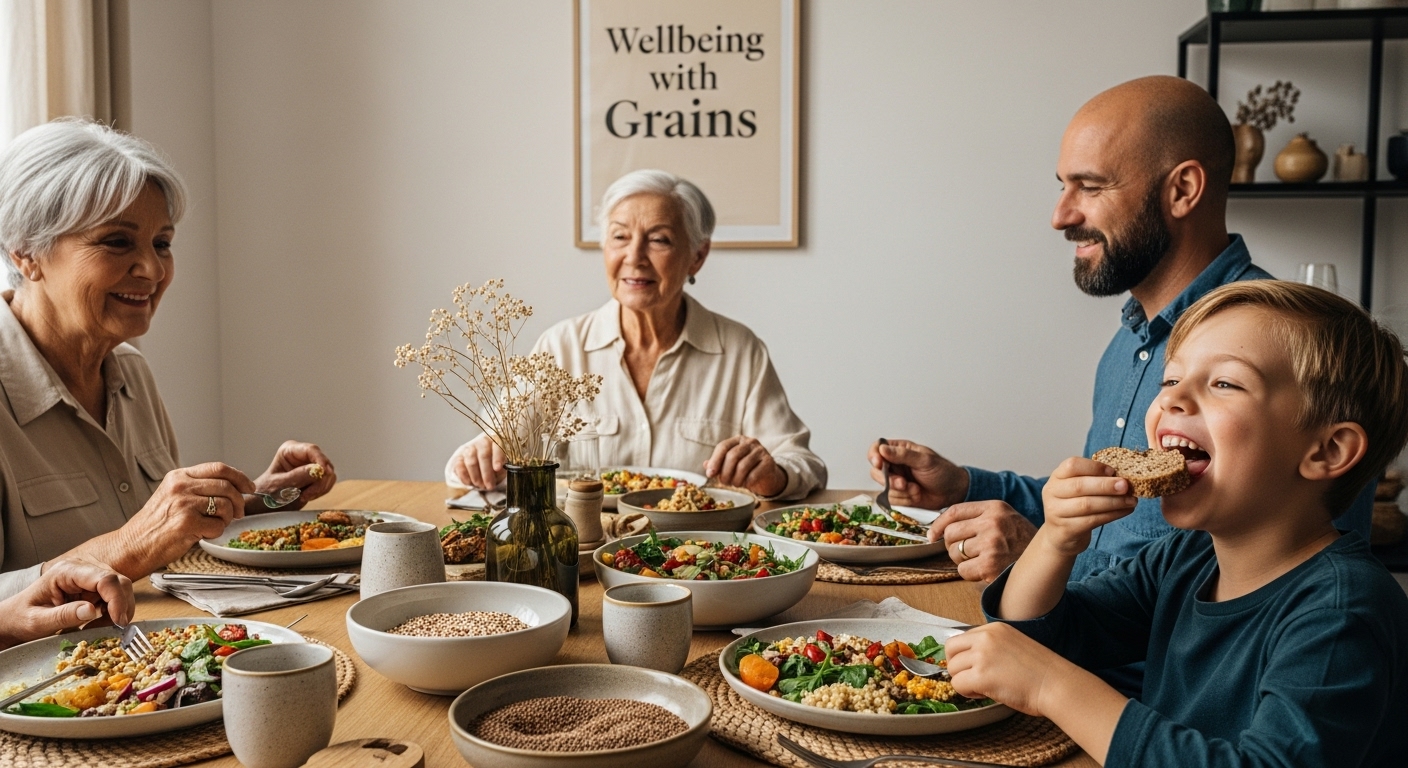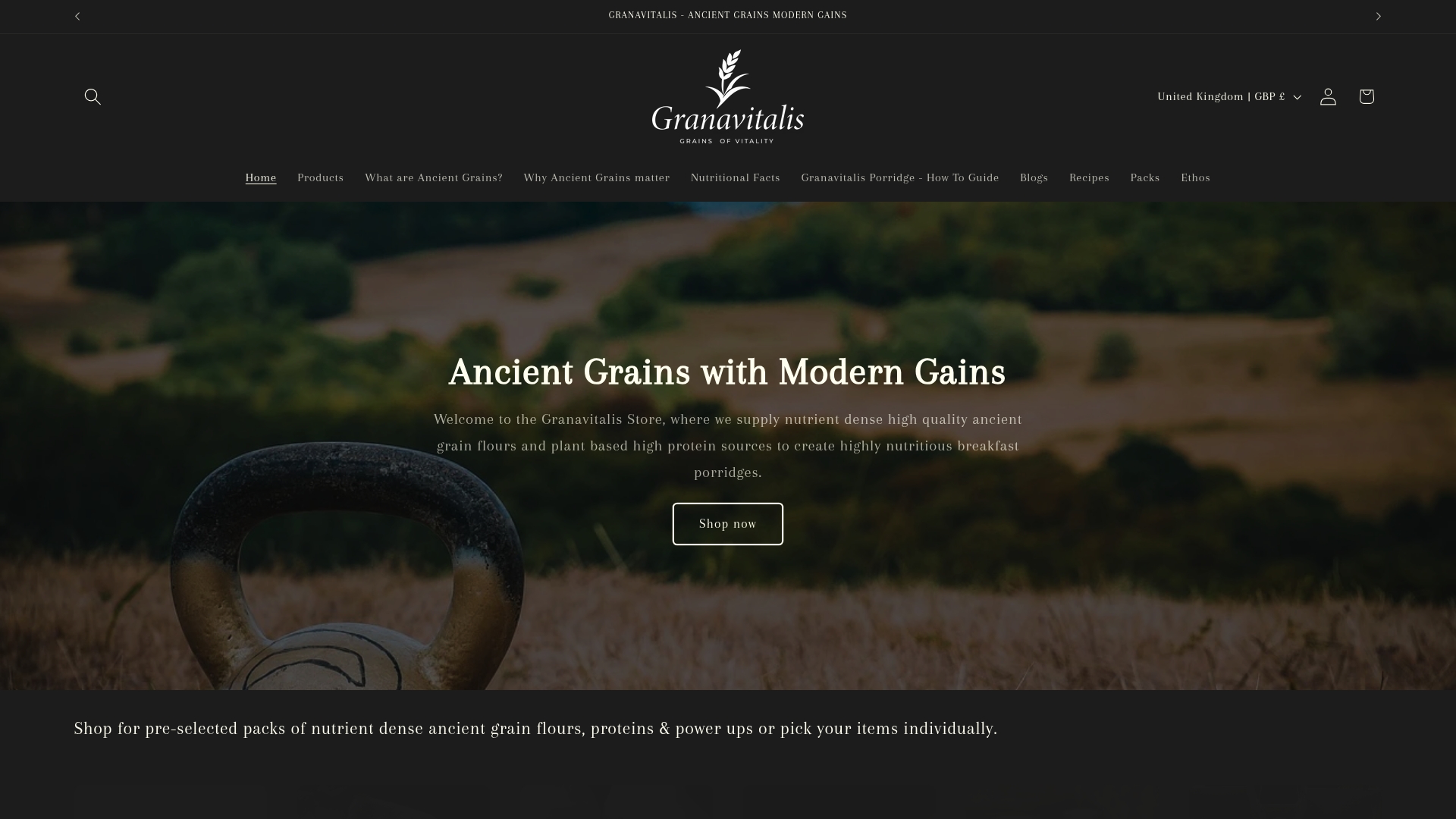
Understanding Ancient Grains Explained for Better Health
Share
Ancient grains sound like something from a history lesson but they have never been more relevant to how we eat and feel today. Shockingly, modern wheat has lost much of its original goodness through selective breeding while ancient grains retain up to 40 percent more minerals and protein than typical wheat. The surprising part is that eating these old-world grains is not about nostalgia or health fads and it is about tapping into a natural, nutrient-rich food source that has quietly powered human civilisation for thousands of years.
Table of Contents
- What Are Ancient Grains And Their Origins?
- The Nutritional Benefits Of Ancient Grains
- How Ancient Grains Support Health And Wellbeing
- Ancient Grains In Vegan And High-Protein Diets
- Practical Applications Of Ancient Grains In Everyday Meals
Quick Summary
| Takeaway | Explanation |
|---|---|
| Ancient grains are minimally processed | These grains, such as einkorn and amaranth, have undergone little genetic modification, preserving their natural nutritional benefits. |
| Higher nutrient density than modern grains | Ancient grains offer more proteins, vitamins, and minerals, which have diminished in contemporary grain varieties. |
| Promote digestive health and metabolic balance | The complex carbohydrates and fiber in ancient grains support digestion, enhance nutrient absorption, and regulate blood sugar levels. |
| Versatile for plant-based diets | Ancient grains can provide complete protein sources and essential nutrients, making them excellent for vegan meal plans. |
| Easy to incorporate into daily meals | From breakfast porridge to salads, using ancient grains can enrich nutrition without sacrificing flavour. |
What Are Ancient Grains and Their Origins?
Ancient grains represent a remarkable category of agricultural produce that has sustained human populations for thousands of years, predating modern agricultural practices. These grains are distinguished by their minimal genetic modification and remarkable nutritional profiles that have remained largely unchanged since their original cultivation.
The Historical Roots of Ancient Grains
Ancient grains originated in diverse geographical regions across the globe, primarily in areas like the Fertile Crescent, parts of Africa, and the Americas. According to research published in Nutrients, these grains including einkorn, emmer, spelt, and teff represent plant species that have undergone minimal selective breeding compared to contemporary wheat varieties.
Key characteristics of ancient grains include:
- Minimal genetic manipulation
- Higher nutrient density
- Greater genetic diversity
- Natural resistance to environmental challenges
Nutritional Significance of Traditional Grain Varieties
Unlike modern wheat, which has been extensively bred for higher yields and easier processing, ancient grains retain their original genetic structures. This preservation means they often contain higher concentrations of essential nutrients, including proteins, minerals, and micronutrients that have been gradually reduced in contemporary grain varieties.
These traditional grains represent more than just food sources—they are living historical records of agricultural practices, demonstrating how human societies developed sustainable farming techniques thousands of years ago. From quinoa in South America to millet in Africa, each grain tells a unique story of human adaptation and survival.
By understanding and reintegrating these ancient grains into modern diets, we reconnect with traditional nutritional wisdom while accessing a rich spectrum of health-supporting nutrients that have nourished generations before us.
Below is a comparison table highlighting the key differences between ancient grains and modern grains based on their defining features discussed in the article.
| Feature | Ancient Grains | Modern Grains |
|---|---|---|
| Genetic Modification | Minimal genetic alteration; original structure preserved | Extensively bred for yield and processing |
| Nutrient Density | Higher protein, minerals, and micronutrient content | Lower nutrient density due to selective breeding |
| Resistance to Environment | Naturally more resilient to environmental challenges | Often relies on external inputs for resilience |
| Fibre Content | Higher fibre content promoting digestive health | Reduced fibre through processing |
| Historical Use | Consumed for thousands of years; little changed | Developed primarily in the last century |
| Examples | Einkorn, emmer, spelt, teff, quinoa, millet | Standard wheat, modern varieties of rice and maize |
The Nutritional Benefits of Ancient Grains
Ancient grains are not merely culinary curiosities but powerful nutritional powerhouses that offer remarkable health advantages beyond standard modern grain varieties. Their unique composition provides a complex array of nutrients that support holistic wellness and address contemporary nutritional challenges.
Nutrient Profile and Metabolic Advantages
Ancient grains distinguish themselves through an exceptional nutritional landscape. According to research from the British Dietetic Association, these grains provide substantially higher concentrations of essential nutrients compared to refined grains.
Key nutritional benefits include:
- Higher fibre content supporting digestive health
- Increased B vitamin concentrations
- Rich mineral profile including iron and magnesium
- Superior protein composition
Comprehensive Health Protection
Whereas modern wheat has been systematically bred for yield and processing efficiency, ancient grains maintain their original nutritional integrity. This preservation translates into significant health advantages, including improved metabolic function and reduced chronic disease risks.

The complex carbohydrate structures in ancient grains provide sustained energy release, preventing rapid blood sugar fluctuations. Their diverse micronutrient profiles support immune function, cellular repair, and long-term metabolic wellness.
Moreover, the genetic diversity of these grains contributes to enhanced nutritional resilience. Each variety offers a unique combination of proteins, antioxidants, and bioactive compounds that work synergistically to promote optimal health, demonstrating that traditional food sources can be profound allies in contemporary nutritional strategies.
The table below outlines various ancient grains mentioned in the article, their regions of origin, and key nutritional highlights, helping readers to differentiate and select grains according to their preferences.
| Ancient Grain | Region of Origin | Key Nutritional Highlights |
|---|---|---|
| Einkorn | Fertile Crescent (Middle East) | High protein, rich in minerals |
| Emmer | Near East | High fibre, B vitamins |
| Spelt | Europe/Asia Minor | Rich in manganese and phosphorus |
| Teff | East Africa (Ethiopia) | High in iron and calcium |
| Quinoa | South America (Andes) | Complete protein, magnesium and iron |
| Millet | Africa, Asia | Rich in fibre and magnesium |
| Amaranth | Central/South America | Lysine-rich protein, calcium |
How Ancient Grains Support Health and Wellbeing
Ancient grains represent more than nutritional sources; they are holistic wellness tools that interact dynamically with human physiological systems. Their complex nutritional profiles contribute to comprehensive health enhancement through multiple biological mechanisms.
Metabolic Health and Disease Prevention
According to research from Harvard T.H. Chan School of Public Health, ancient grains offer significant protective mechanisms against chronic diseases. Their unique composition supports metabolic functions and reduces systemic inflammation.
Key metabolic benefits include:
- Improved insulin sensitivity
- Reduced cardiovascular disease risk
- Enhanced blood sugar regulation
- Lower inflammation markers
Gut Microbiome and Immune Support
The intricate fiber structures in ancient grains serve as powerful prebiotics, nurturing beneficial gut bacteria. These microorganisms play crucial roles in digestive health, immune function, and overall metabolic balance. By providing diverse, complex carbohydrates, ancient grains create an optimal environment for microbiome diversity.
Moreover, the phytonutrients and antioxidants present in these grains contribute to cellular protection. They neutralise harmful free radicals, support cellular repair mechanisms, and help maintain robust immune responses. This multifaceted approach demonstrates how traditional food sources can provide comprehensive wellness support far beyond basic nutritional requirements.
Ancient Grains in Vegan and High-Protein Diets
Vegan and plant-based nutrition landscapes are increasingly recognising ancient grains as critical protein sources that bridge nutritional gaps traditionally challenging for meat-free diets. These nutrient-dense grains offer comprehensive amino acid profiles and essential micronutrients that support holistic dietary requirements.
Protein Quality and Nutritional Completeness
According to research from the Quadram Institute, plant-based diets often struggle with protein diversity and completeness. Ancient grains emerge as strategic solutions, providing robust protein sources with complex nutritional profiles.
Key protein advantages of ancient grains include:
- Complete amino acid profiles
- Higher protein concentration compared to standard grains
- Enhanced bioavailability of nutrients
- Lower anti-nutrient content
Strategic Nutritional Integration
Certain ancient grains like quinoa, amaranth, and teff stand out as exceptional protein sources. These grains contain all nine essential amino acids, making them rare complete protein sources in the plant kingdom. Their nutritional complexity goes beyond protein, offering additional benefits such as iron, magnesium, and B vitamins that are crucial for maintaining energy metabolism and supporting overall cellular function.
Moreover, the genetic diversity of these grains allows for more flexible and nutrient-rich dietary strategies. By incorporating multiple ancient grain varieties, individuals can create more balanced and nutritionally comprehensive plant-based meal plans that meet diverse physiological needs without relying on animal protein sources.
Practical Applications of Ancient Grains in Everyday Meals
Transforming ancient grains from nutritional curiosities into everyday dietary staples requires understanding their versatility and practical integration strategies. These remarkable ingredients can seamlessly enhance meals across breakfast, lunch, dinner, and snack options.
Breakfast and Morning Nutrition
According to NHS nutritional guidance, incorporating whole grains into daily meals is essential for improving digestive health and reducing chronic disease risks. Ancient grains offer exceptional opportunities for morning nutrition through creative preparation methods.
Practical breakfast integration techniques include:
- Creating quinoa porridge with seasonal fruits
- Preparing overnight chia seed puddings
- Blending millet into smoothie bases
- Baking ancient grain breakfast muffins
Versatile Culinary Applications
Ancient grains transcend traditional preparation methods, offering remarkable adaptability across diverse culinary contexts. Grains like amaranth, teff, and sorghum can be transformed into salads, grain bowls, risottos, and even baked goods, providing substantial nutritional benefits without compromising taste or texture.
By understanding each grain’s unique cooking properties, home cooks can develop innovative recipes that elevate nutritional content while maintaining delightful flavour profiles.
 The key lies in experimenting with different grain varieties and recognising their individual characteristics, transforming meal preparation from mundane to extraordinary.
The key lies in experimenting with different grain varieties and recognising their individual characteristics, transforming meal preparation from mundane to extraordinary.
Rediscover Real Nourishment With Ancient Grains
Have you ever noticed how modern diets often leave you feeling unsatisfied, even when you try to make healthy choices? As explained in ‘Understanding Ancient Grains Explained for Better Health,’ so many cereals and grains today are stripped of the nutrients, fibre, and protein our bodies genuinely need. This article highlights the urgent need to reconnect with time-tested foods like ancient grains that are naturally rich in micronutrients and sustained humanity for centuries. If you are seeking a breakfast that supports steady energy, improved digestion, and truly nourishes your body, it is time to explore a more purposeful approach.

At Granavitalis, you can experience the benefits of ancestral grains first-hand—every bowl is made to revitalise your morning and help move away from quick-fix cereals that leave you wanting more. Discover our range of premium ancient grains and protein-focused breakfast solutions that reflect the nutritional wisdom discussed in the article. Do not wait to make your mornings more nourishing. Visit our main page now and start a new wellness tradition with foods that truly support your best self.
Frequently Asked Questions
What are ancient grains?
Ancient grains are cereal grains that have remained largely unchanged over thousands of years, featuring minimal genetic modification. Examples include einkorn, emmer, spelt, and teff.
How do ancient grains compare nutritionally to modern grains?
Ancient grains are often richer in nutrients, such as proteins, vitamins, and minerals, compared to modern grains, which have been bred for higher yields but lost some nutritional value.
What health benefits do ancient grains provide?
Ancient grains can support metabolic health, improve digestive function, reduce chronic disease risk, and enhance immune support due to their high fibre content and diverse micronutrient profiles.
How can I incorporate ancient grains into my diet?
You can incorporate ancient grains into your meals by using them in porridge, salads, grain bowls, and baked goods. Popular options include quinoa, amaranth, and teff, which can easily replace standard grains in recipes.
